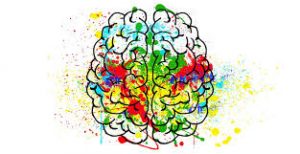Author: Pablo Lanillos
Assistant Professor Cognitive AI. Donders Institute for Brain, Cognition and Behaviour. The Netherlands.
This set of exercises was created and adapted for different venues, such as the Active Self Summer school and the NeurIPS course at the department of Artificial Intelligence, Radboud University.
If you use any of the codes, please cite the corresponding citation described in each of the jupyter notebooks.
In exercises you can find notebooks with the description of the problem and gaps in the code that you have to fill in.
- The sensing wheel. Perception as an inference process: predictive processing. (difficulty: Low)
- Pixel predictive processing. Deep learning + Free energy optimization on the MINST dataset. (difficulty: Medium)
- TODO Braitemberg vehicles. Model the attraction behaviour of vehicles to light sources (difficulty: High)
- Rubber-hand illusion. Model the proprioceptive drift and involuntary movements under FEP. (difficulty: High)
In solutions you can find the problem solved so you can check whether you code is correct.
- The sensing wheel. Perception as an inference process: predictive processing. (difficulty: Low)
- Pixel predictive processing. Deep learning + Free energy optimization on the MINST dataset. (difficulty: Medium)
- Braitemberg vehicles. Model the attraction behaviour of vehicles to light sources (difficulty: High)
- Rubber-hand illusion. Model the proprioceptive drift and involuntary movements under FEP. (difficulty: High)
- The thermostat
- Pixel Active Inference
